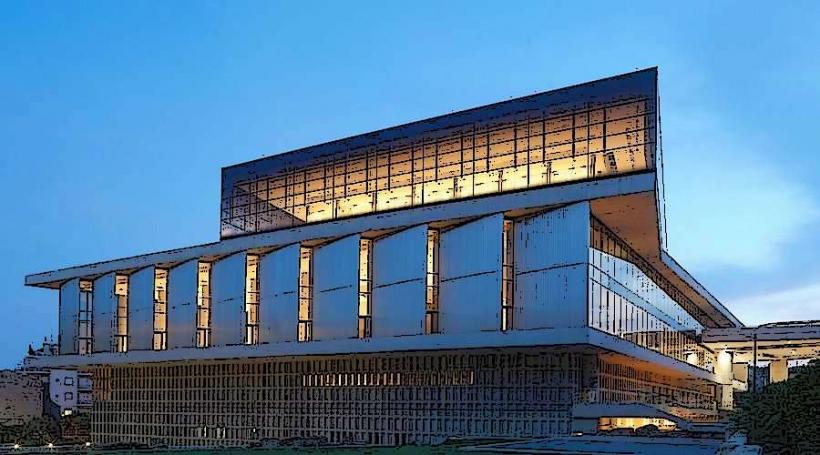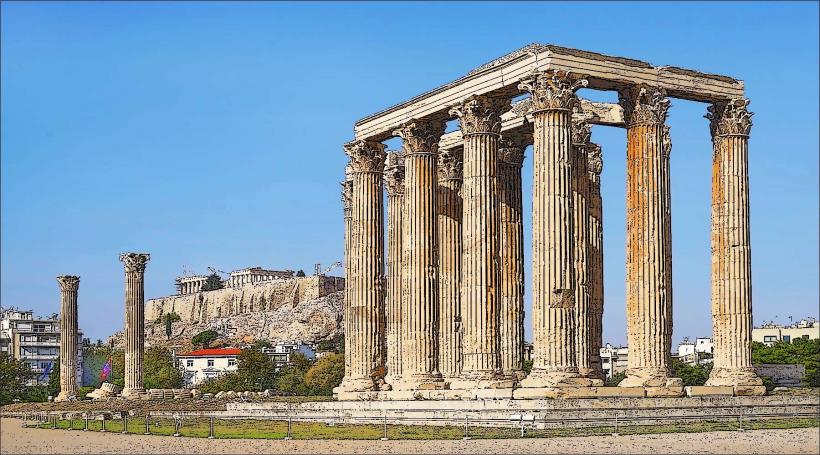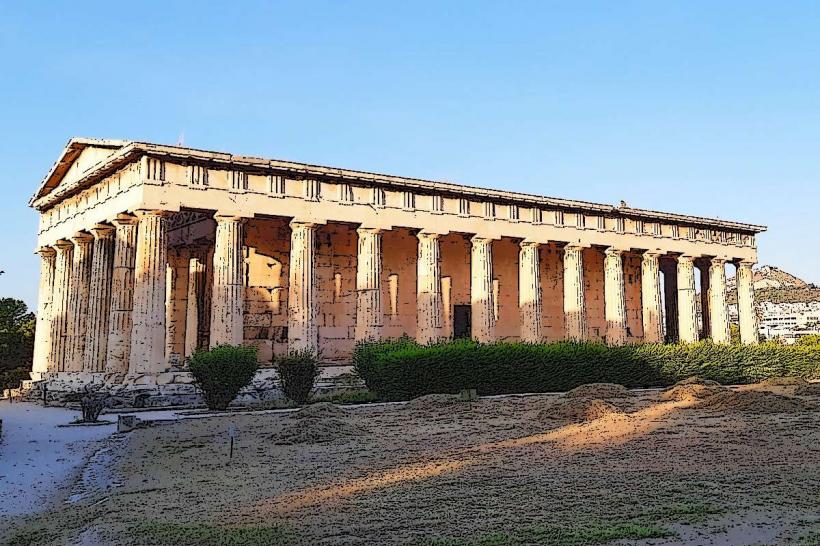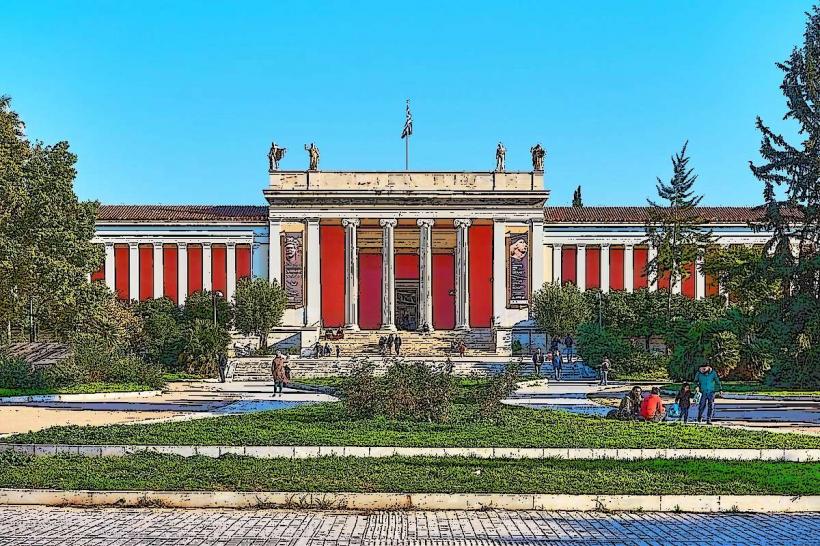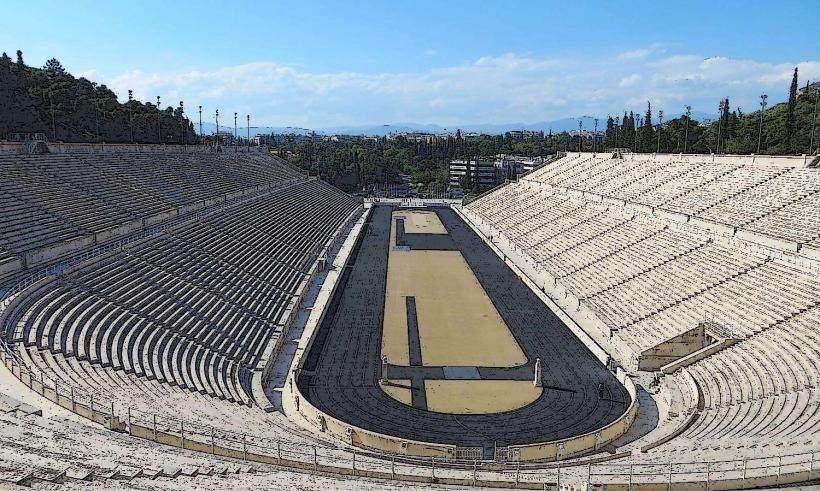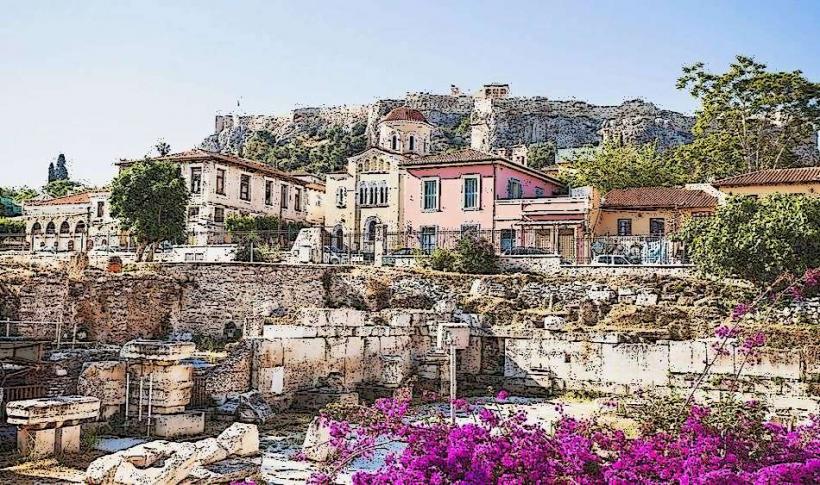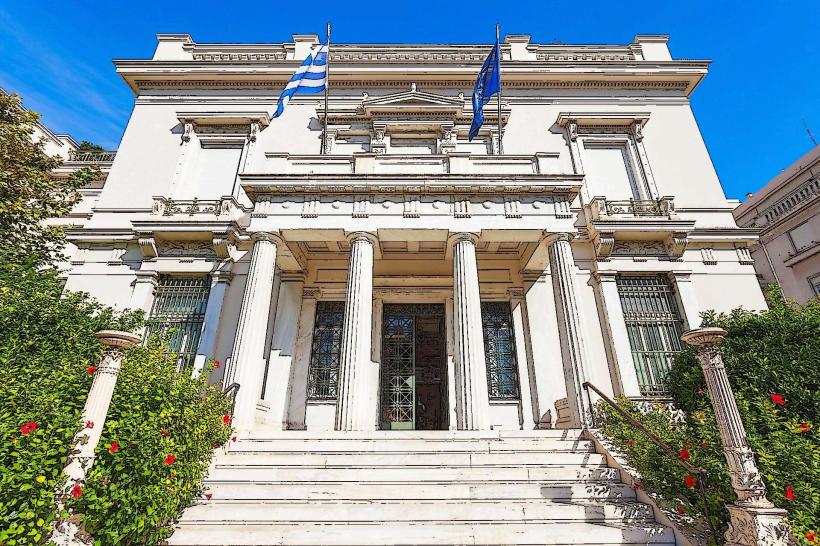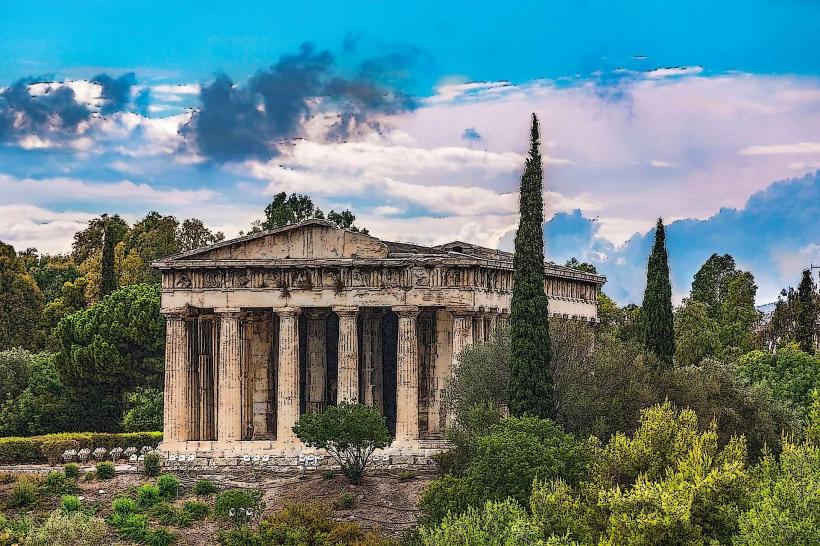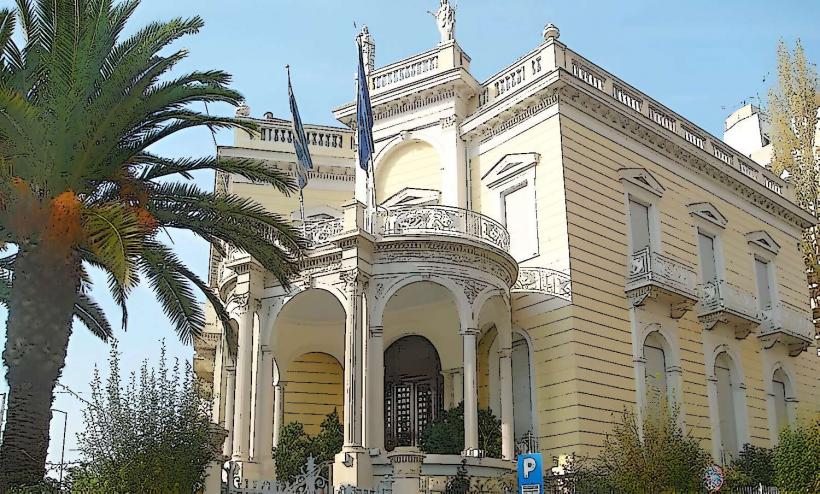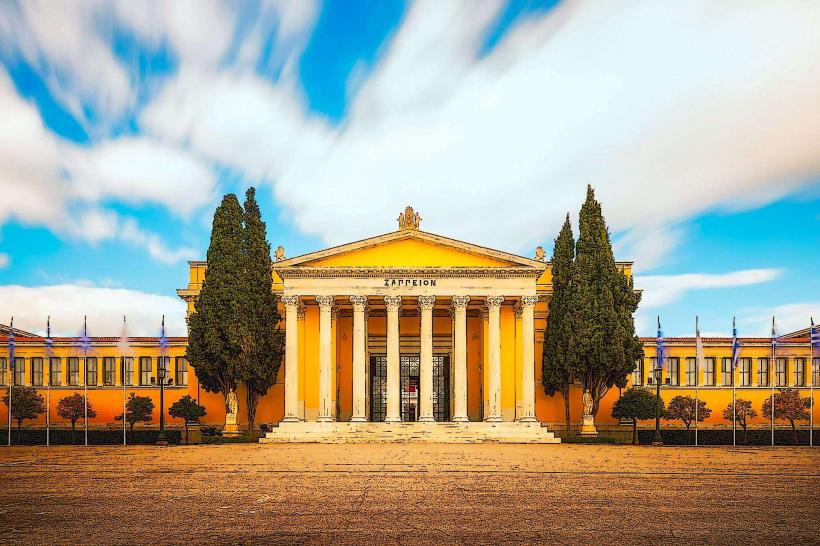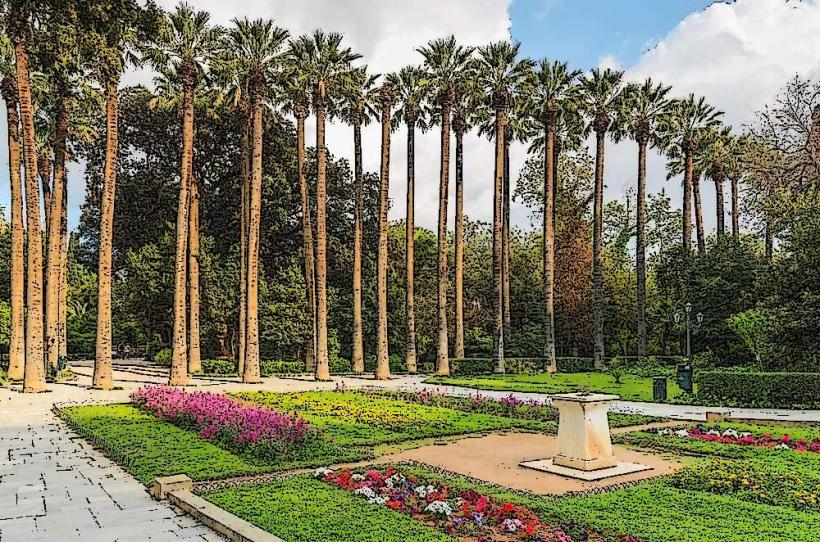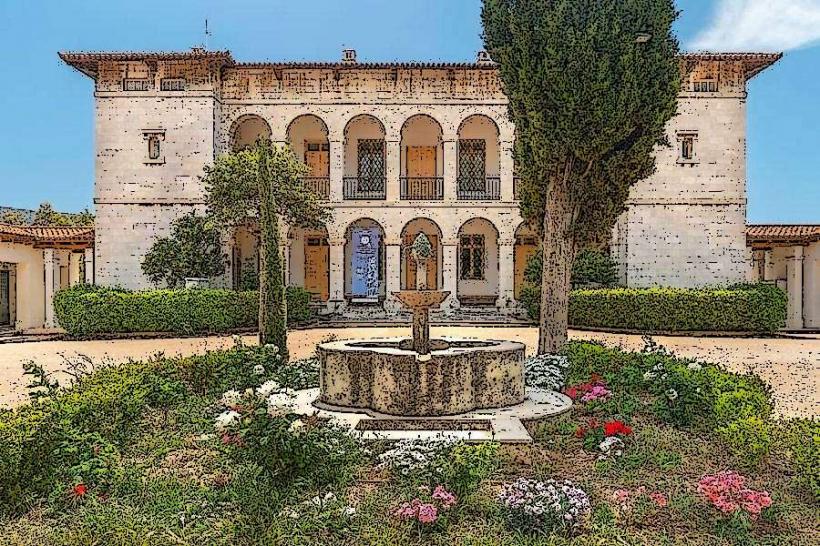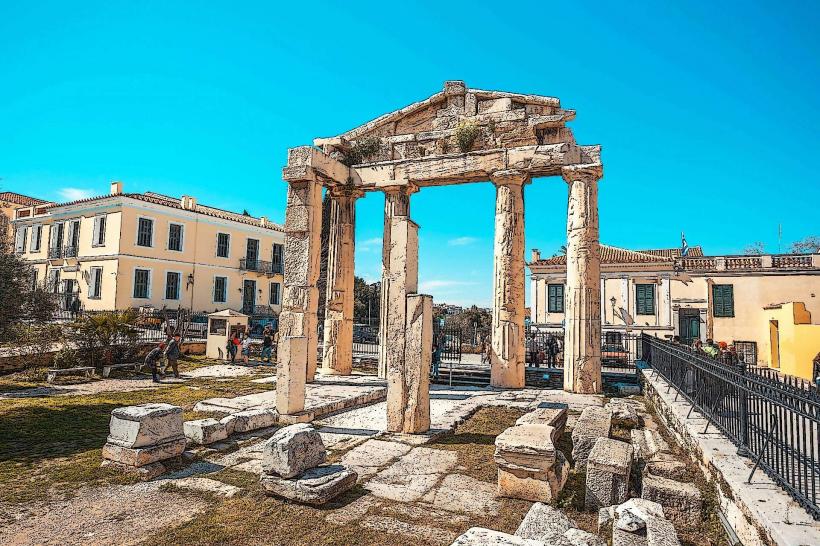Information
Landmark: Hadrians LibraryCity: Athens
Country: Greece
Continent: Europe
Hadrian’s Library (Greek: Βιβλιοθήκη του Αδριανού) is an important archaeological site in Athens, Greece, built by the Roman Emperor Hadrian in 132 CE. The library was part of a larger complex that included a gymnasium, a courtyard, and other structures, and it played a key role in the cultural and intellectual life of ancient Athens during the Roman period.
Historical Background:
- Hadrian’s Library was constructed by Emperor Hadrian in honor of his admiration for the city of Athens and its ancient traditions of learning and philosophy. Hadrian, who ruled the Roman Empire from 117 to 138 CE, was known for his strong support of Greek culture and for promoting Greek educational institutions throughout the empire.
- The library was built during a period when Athens was still an important center of learning, even under Roman rule. Hadrian funded the construction of the library as part of his larger project to improve the city and strengthen the connection between the Roman Empire and Greek culture.
- The library is believed to have contained scrolls and manuscripts, likely focusing on Greek philosophy, literature, and science, making it a vital resource for scholars and students of the time.
Architectural Features:
- The design of Hadrian's Library follows the traditional Roman style of libraries, featuring a rectangular layout with a large central courtyard and several smaller rooms that would have housed shelves of scrolls.
- Columns: The library had a grand façade, supported by large columns, and was decorated with Roman-style architectural elements, blending Roman and Greek architectural styles.
- Courtyard: The central courtyard was likely used as a gathering place for students and scholars, with the surrounding rooms used for reading, studying, and scholarly discussion. This area would have been the focal point of intellectual activity.
- The library is also thought to have contained a fountain and several other ornamental features that were typical of Roman buildings of the time.
Function and Importance:
- Cultural Center: Hadrian’s Library was not only a place for storing books but also a center for education and intellectual exchange. It likely hosted lectures, philosophical discussions, and gatherings of scholars from both Athens and the broader Roman world.
- Public Access: Unlike some other private libraries of the time, Hadrian’s Library was accessible to the public, which meant that any educated citizen could visit and make use of the collection of scrolls and manuscripts.
- Greek and Roman Influence: The library helped preserve Greek intellectual traditions during the Roman period, allowing for the continued study of Greek philosophy, history, and other disciplines. This played an important role in keeping these traditions alive, even as Athens came under Roman control.
Decline and Destruction:
- After the Roman period, Hadrian’s Library suffered damage over time due to various events, including the Herulian invasion of Athens in 267 CE, which caused widespread destruction throughout the city. The library, along with many other buildings, was partially destroyed during this invasion.
- By the Byzantine period, the library had lost much of its former grandeur, and the site was repurposed for various uses over the centuries.
- Today, the ruins of Hadrian’s Library stand as a testament to the intellectual and cultural importance of Athens in antiquity, as well as to Hadrian’s role in promoting Greek culture within the Roman Empire.
Excavations and Current State:
- The remains of Hadrian's Library were rediscovered during excavations in the 19th and 20th centuries. Today, visitors can see parts of the library’s structure, including the walls, columns, and arches that have survived over time.
- The site has been partially restored, but much of the building has been lost, and only the foundations and a few prominent features remain visible today.
- Key features of the site include entrance gates, column bases, and the remnants of the central courtyard. Some scholars believe that part of the structure may have been repurposed into later Byzantine or Ottoman buildings.
Location:
- Hadrian’s Library is located in the Monastiraki area of Athens, near the Roman Agora and the Tower of the Winds. The ruins are situated on Areos Street, near the intersection with Athinas Street, and are easily accessible to visitors touring the historic center of Athens.
Nearby Attractions:
- Roman Agora: The Roman Agora is located just a short distance from Hadrian’s Library and is another important site from the Roman period in Athens. It contains the Tower of the Winds, which is a well-preserved example of a Roman-era clocktower.
- Monastiraki Flea Market: Monastiraki, which is nearby, is known for its vibrant flea market, offering visitors the chance to shop for antiques, souvenirs, and traditional Greek items.
- Acropolis: The Acropolis and Acropolis Museum are located within walking distance, making them natural additions to any tour of the historical heart of Athens.
- Syntagma Square: A short distance away, Syntagma Square serves as a political and cultural hub of the city, with easy access to shopping and dining.
Summary:
Hadrian's Library is a remarkable symbol of the cultural exchange between Rome and Greece during the Roman Empire. Built by the Roman Emperor Hadrian in 132 CE, the library was a vital center of learning and intellectual exchange, preserving and promoting Greek traditions. Though much of the structure has been lost over time, the surviving remains offer a glimpse into the library’s grand past, making it an important site for visitors interested in Athens' Roman period and its rich intellectual heritage. Its proximity to other historic sites such as the Roman Agora and the Acropolis makes it a key stop for those exploring ancient Athens.



